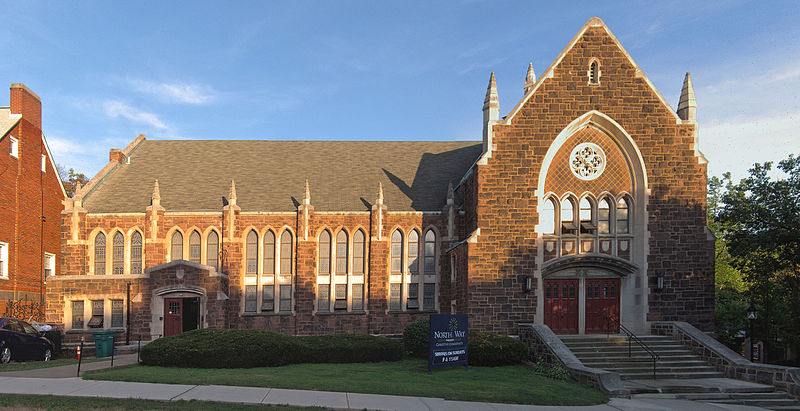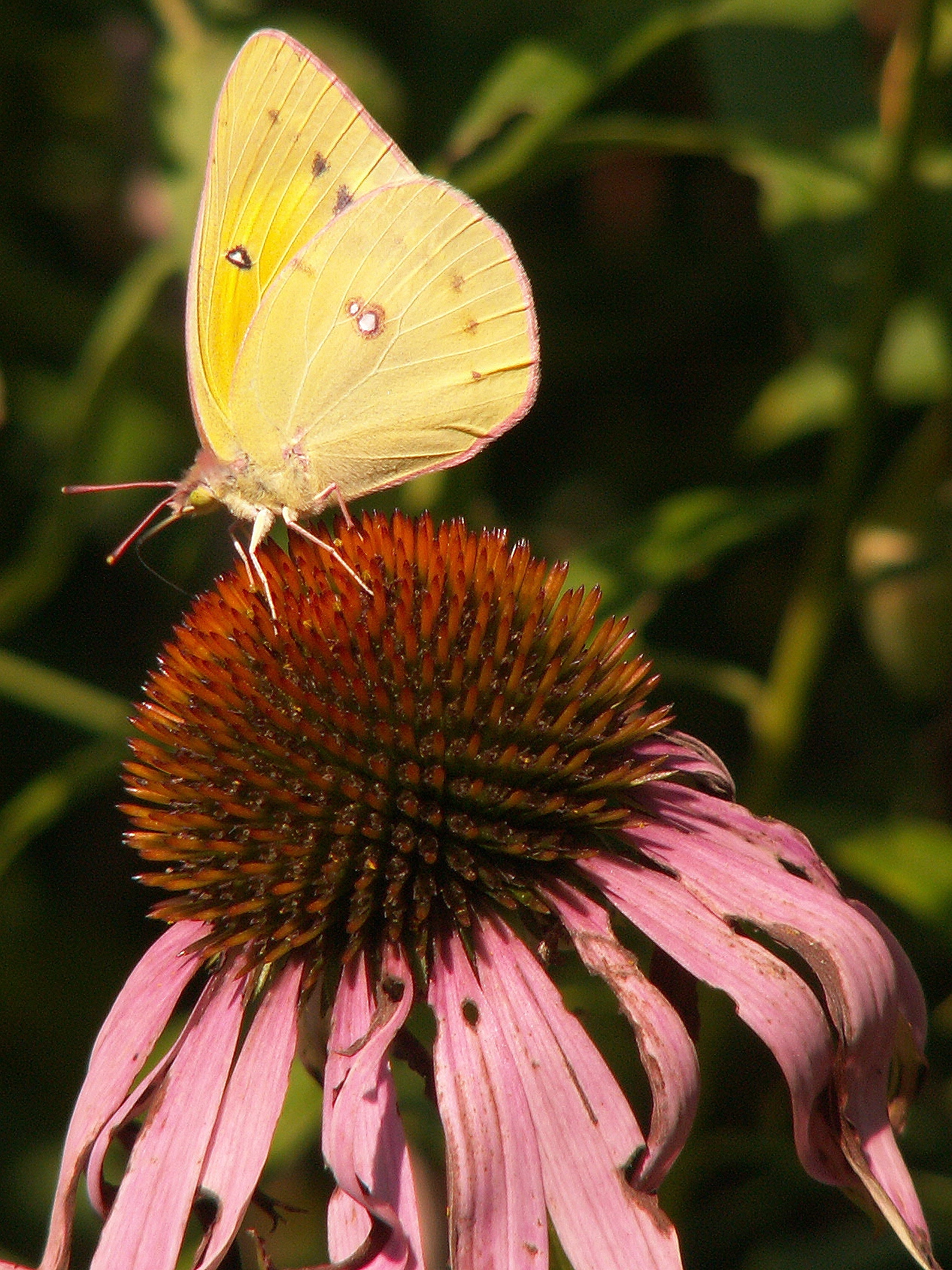
Problems with pumping equipment, according to Phipps staff, have kept the famous Victoria Lilies out of the Victoria Room for years. But now they are back and in full bloom.
Cameras: Konica-Minolta DiMAGE Z3 and Canon PowerShot A590 (hacked).





Problems with pumping equipment, according to Phipps staff, have kept the famous Victoria Lilies out of the Victoria Room for years. But now they are back and in full bloom.





Two caterpillars share a blade of grass. Father Pitt does not know what kind of moth or butterfly they will grow into, but as caterpillars they have a particularly tasteful black-and-white design.


In 2013 the Presbyterians, Methodists, and Baptists in Dormont all threw in the towel, though the borough itself seems no less prosperous than usual. The Presbyterians sold this fine 1927 building to North Way Christian Community, a chain-store megachurch, which has spent a good bit of money keeping it up.


Another butterfly (this one Colias philodice) on a Purple Coneflower (Echinacea purpurea). The Clouded Sulphur seems to be nothing but a plain yellow butterfly as it flutters past, but a close examination reveals bright pink antennae and a pink rim around the wings.



The flower (Echinacea purpurea) looks a bit bedraggled, but the butterfly (Chlosyne nycteis) is in fine shape.

First Presbyterian Church in Jeannette is a substantial classical building with a prominent dome, one of the distinctive features of the Jeannette skyline. Domes are very unusual on Presbyterian churches around here: at the moment, Father Pitt cannot think of another one.
A Historic American Buildings Survey picture from some time ago (possibly early 1990s? Note the front of the car in the far right) shows the church in pretty much the same state.

Addendum: Father Pitt suspects this is a design by Fulton & Butler of Uniontown, prolific suppliers of big buildings to small cities. J. C. Fulton loved domes, and whenever we see a big dome in a town this size, we should suspect him.
Update: Old Pa Pitt’s instinct was right, except that this church was designed before Butler became a partner in the firm. From the Construction Record, December 10, 1910: “Jeannette, Pa. — Plans will soon be started by Architect J. C. Fulton, Main street, Uniontown, Pa., for a brick church building, for the First Presbyterian Congregation, to cost $25,000. The contract will be awarded about the middle of February.”

This colorful slime mold, Fuligo septica, is known to gardeners as the Dog Vomit Fungus, but it is not a fungus. Slime molds are fascinating beings more closely related to amoebas than to mushrooms, and you should really read up on them. For example, this species has a worldwide distribution, and Wikipedia helpfully informs us that “in Estonian mythology it was thought to be leftovers from kratt.” That, of course, tempts us to find out what a kratt is; it turns out to be “a creature formed from hay or of old household implements by its master, who then had to give the devil three drops of blood for the devil to bring life to the Kratt.” That in turn tempts Father Pitt to find out a lot more about Estonian mythology.
Father Pitt has tried to adjust the color to make the bright yellow as close as possible to what he actually saw, but some colors in nature are simply too vivid to reproduce accurately on your screen.

Jeannette is a pleasant little city in the eastern suburbs. Downtown is not as lively as it used to be, but it does have this one fine Art Deco office building, which is poetically named the Jeannette Office Building.

East Liberty
Over at Mental Floss, an interesting article tells us How 65 Pittsburgh Neighborhoods Got Their Names. Someone pointed out the article to old Pa Pitt, and he immediately noticed that three of the pictures were his. These are pictures he has donated to Wikimedia Commons, as he does most of his pictures these days, and he is delighted to see that people are finding them as useful as he had hoped.

Carrick

Garfield

The Concordia Club was one of a number of fine clubs in Oakland; it lasted until 2009, when its building was sold to the University of Pittsburgh, which made it into the O’Hara Student Center. It was founded “to promote social and literary entertainment among its members,” and it seems always to have been a largely Jewish organization. Father Pitt does not know the details of the sale, but it took at least the club’s Web site by surprise. The site is frozen in 2009, with a calendar of events whose last entry is April 30, 2009: Annual Meeting and Dinner.
The building itself was designed by the prolific Charles Bickel, who could always be relied on to make the client proud.